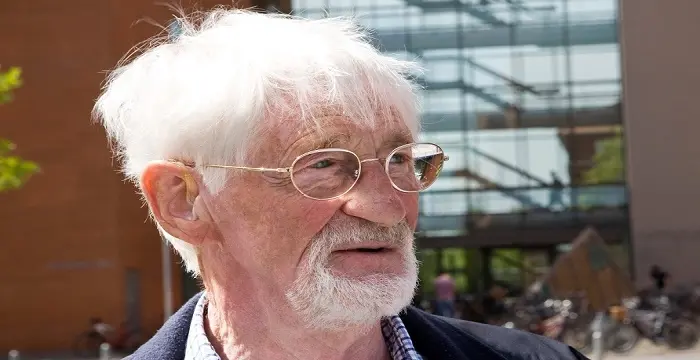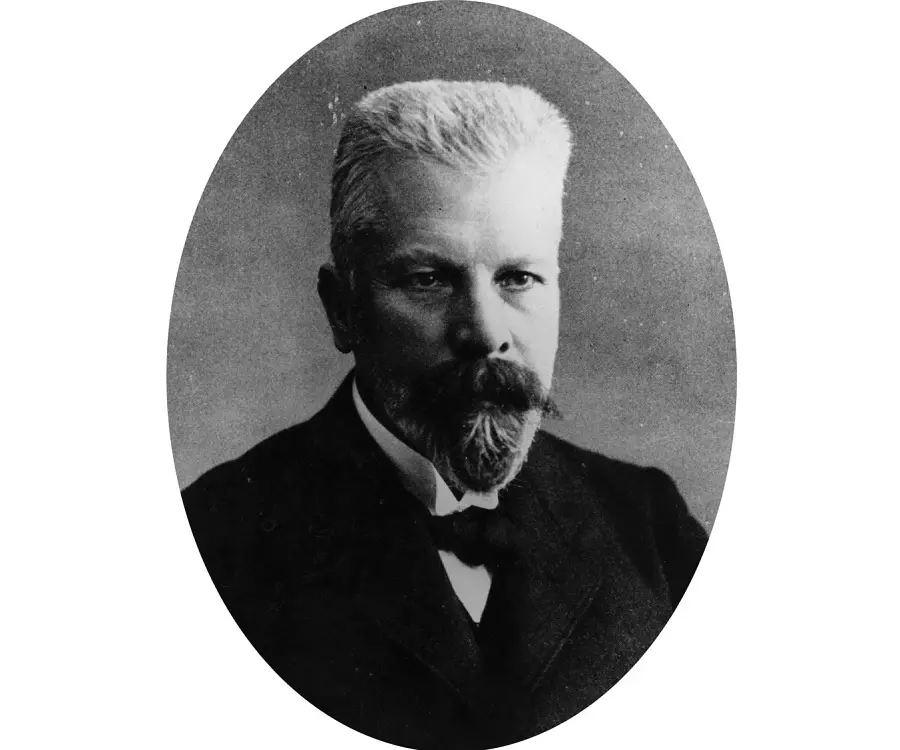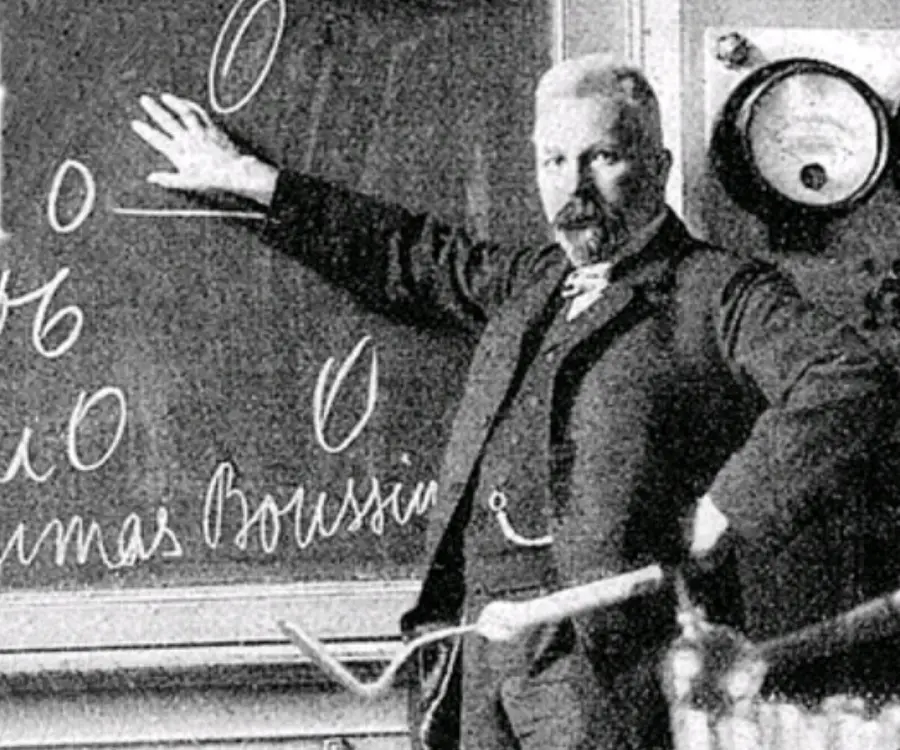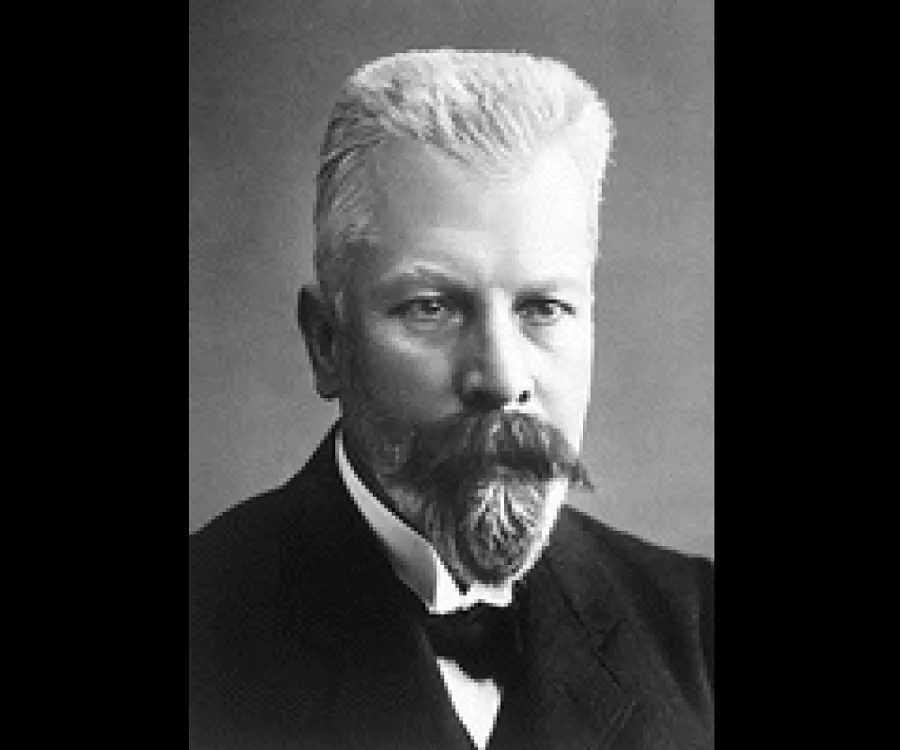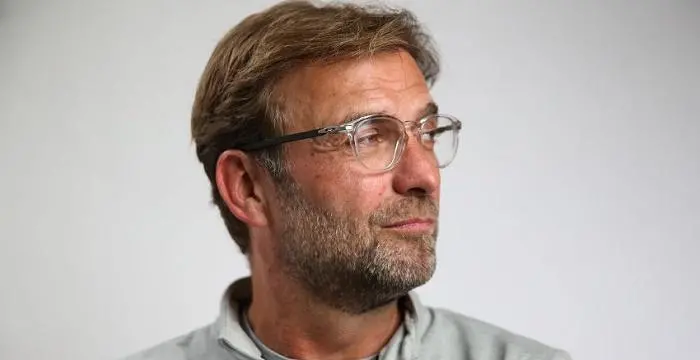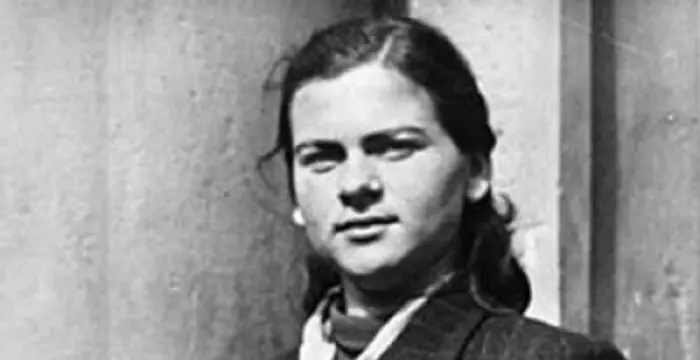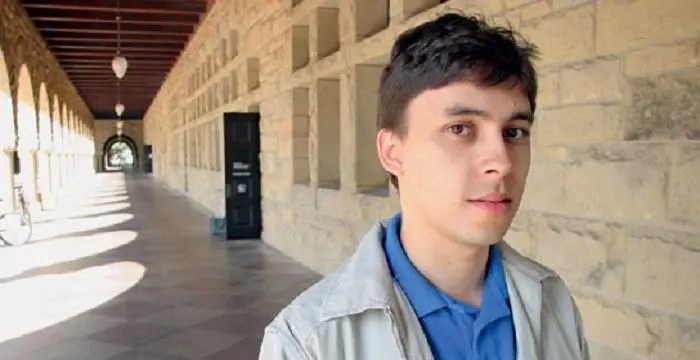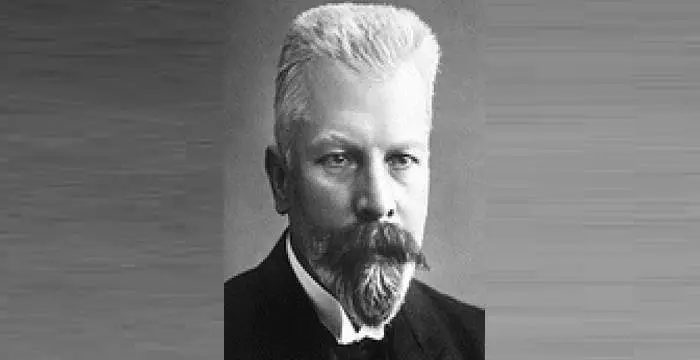
Eduard Buchner - Nobel Laureate in Chemistry, Birthday and Childhood
Eduard Buchner's Personal Details
Eduard Buchner was a German chemist and a zymologist who won the 1907 Nobel Prize in Chemistry
| Information | Detail |
|---|---|
| Birthday | May 20, 1860 |
| Died on | August 13, 1917 |
| Nationality | German |
| Famous | Scientists, Chemists, Nobel Laureate in Chemistry |
| Siblings | Hans Ernst August Buchner |
| Universities |
|
| Birth Place | Munich |
| Gender | Male |
| Sun Sign | Taurus |
| Born in | Munich |
| Famous as | Nobel Laureate in Chemistry |
| Died at Age | 57 |
// Famous Nobel Laureate in Chemistry
Jens C Skou
Jens Christian Skou is a Danish scientist and doctor who won the 1997 Nobel Prize in Chemistry. Read this section to find out more about his life, career and scientific discovery.
Eduard Buchner's photo
Who is Eduard Buchner?
Eduard Buchner was a German chemist and a zymologist who won the 1907 Nobel Prize in Chemistry. Born into an educationally distinguished family, he lost his father when he was barely eleven years old. His elder brother, Hans Buchner, helped him to get good education. However, financial crisis forced Eduard to give up his studies for a temporary phase and he spent this period working in preserving and canning factory. Later, he resumed his education under well-known scientists and very soon received his doctorate degree. He then began working on chemical fermentation. However, his experience at the canning factory did not really go waste. Many years later while working with his brother at the Hygiene Institute at Munich he remembered how juices were preserved by adding sugar to it and so to preserve the protein extract from the yeast cells, he added a concentrated doze of sucrose to it. What followed is history. Sugar in the presence of enzymes in the yeast broke into carbon dioxide and alcohol. Later he identified the enzyme as zymase. This chance discovery not only brought him Nobel Prize in Chemistry, but also brought about a revolution in the field of biochemistry.
// Famous Scientists
Juliane Koepcke
Juliane Koepcke is a German-Peruvian biologist, who was the lone survivor among the 92 passengers and crew of the ill-fated LANSA Flight 508 that crashed in the Peruvian rainforest on 24 December 1971. Know more about her life in this biography.
Henry Cavendish
Henry Cavendish was a theoretical chemist and physicist, renowned for discovery of hydrogen and calculation of the mass of earth. To know more about his childhood, profile, timeline and career read on
Konstantin Tsiolkovsky
Konstantin Tsiolkovsky was a Russian rocket scientist and a pioneer of astronautics. This biography provides detailed information about his childhood, family, personal life, career, achievements, etc.
Childhood & Early Years
Eduard Buchner was born on May 20, 1860, in Munich, into a well-known Bavarian family. His father, Ernst Buchner, was the Professor Extraordinary of Forensic Medicine and Obstetrics. In addition, he was also the editor of the Ärztliches Intelligenzblatt (later Münchener medizinische Wochenschrift). His mother’s name was Friederike née Martin.
Eduard’s elder brother, Hans Ernst August Buchner, was ten years senior to him. He grew up to be a well-known bacteriologist and a pioneer in the field of immunology. He not only supported Eduard’s education after their father’s death in 1872, but also assisted him in his works in later years.
Eduard had his early education at Maximilian Gymnasium, Munich. Later he joined the laboratory of E. Erlenmeyer Sr. at Munich Polytechnic; today known as Technical University of Munich. But due to financial constraints, he could not finish his studies there. Instead he took up a job in a preserving and canning factory.
He next resumed his studies in 1884. While studying at the Polytechnic he had grown an interest in chemistry and now he began to study the subject with Professor Adolf von Baeyer at the Bavarian Academy of Science in Munich.
Concurrently, he also studied botany with Professor Carl von Naegeli at the Botanic Institute, Munich. It is here that Eduard became interested in the problems of alcoholic fermentation. He now began to work on it under the supervision of his brother, who had by this time become a lecturer at the University of Munich.
After much experimentation, Eduard came to the conclusion that contrary to what Pasteur had said, presence of oxygen is not a precondition for fermentation. In 1885, he published his findings in his first paper, titled ‘Der Einfluss des Sauerstoffs auf Gärungen’ (The influence of oxygen on fermentations).
Sometime during this period, he was awarded Lamont Scholarship for three years by the Philosophical Faculty. It helped him to complete his doctoral thesis without any financial stress.
Although he completed most part of the thesis under Adolf von Baeyer he spent the last term working with Otto Fischer at his laboratory in Erlangen. Finally, he received his doctoral degree from the University of Munich in 1888.
Career
In 1889, Eduard Buchner began his career as an assistant lecturer at the laboratory of Adolf von Baeyer at the University of Munich. Two years later in 1891, he was promoted to the post of the lecturer at the same university.
Some time now, he also received a grant from von Baeyer. With that he set up his own laboratory and began working on chemical fermentation. In 1883, he made his first experiment on the rupture of yeast cells. However, the Board of the Laboratory opined that nothing would come out of the experiment and consequently it was set aside for three years.
In the same year in autumn, Buchner shifted to the University of Kiel as a lecturer. Here he worked in the Department of Analytical Chemistry at the laboratory of T. Curius. In 1895, he was promoted to the post of associated professor at the same university.
In 1896, Buchner joined University of Tübingen as a Professor Extraordinary of Analytical Pharmaceutical Chemistry. His brother, Hans Buchner, had by then become a member on the Board of Directors in the Hygiene Institute at Munich. It had the infrastructure required for detailed experimentation.
Eduard Buchner now began spending his vacations at his brother’s laboratory at Munich and resumed his research on the content of the yeast cell. In the fall of 1896, he accidentally found an enzyme mixture called zymase that transformed sugar into alcohol.
He published his findings on January 9, 1897 in Berichte der Deutschen Chemischen Gesellschaft. The article was titled ‘Alkoholische Gärung ohne Hefezellen’ (On alcoholic fermentation without yeast cells).
However, discovering zymase was not an end in itself. He had to defend his discovery against various objections raised by other scientists. Among them, physiologist, Max Rubner, the biochemist, Hans von Euler-Chelpin, and the botanist, Wilhelm Ruhland, were most vocal. By 1902, Buchner published seventeen more papers in defense of his theory.
In October 1898, Buchner was appointed to the Chair of General Chemistry at Königliche Landwirtschaftliche Hochschule (Royal Academy for Agriculture) in Berlin. Here he continued with his experimentations and teaching. Simultaneously, he worked to improve his qualification.
In 1900, Buchner received his habilitation from the University of Berlin. It enabled him not only to obtain larger grants, but also allowed him to train his own research assistants.
His years in Berlin had been most productive. In 1903, he published his book, titled ‘Die Zymasegärung (Zymosis)’. It was written in collaboration with his brother Hans Buchner and Martin Hahn. In it he talked in detail about his work on the alcoholic fermentation of sugar.
In 1909, Buchner was appointed to the Chair of Psychological Chemistry in the University of Breslau. From there he was transferred to the University of Würzburg in 1911. He was there when the World War I broke out. He volunteered to join the army and was drafted as a Captain in August 1914.
Major Works
Eduard Buchner is best remembered for his discovery of zymase, an enzyme mixture that promotes cell free fermentation. However, it was a chance discovery. He was then working in his brother’s laboratory in Munich trying to produce yeast cell free extracts, which the latter wanted to use in an application for immunology.
To preserve the protein in the yeast cells, Eduard Buchner added concentrated sucrose to it. Bubbles began to form soon enough. He realized that presence of enzymes in the yeast has broken down sugar into alcohol and carbon dioxide. Later, he identified this enzyme as zymase and showed that it can be extracted from yeast cells. This single discovery laid the foundation of modern biochemistry.
Awards & Achievements
In 1907, Eduard Buchner was awarded the Nobel Prize in Chemistry "for his biochemical researches and his discovery of cell-free fermentation".
He was elected as the President of the German Chemical Society in 1904-1905.
Personal Life & Legacy
Eduard Buchner married Lotte Stahl on 19 August, 1900. The couple had four children; Friedel, Luise, Hans and Rudolf. Among them, Luise died in infancy. Friedel grew up to be a teacher, Hans a physicist and Rudolf a historian.
Eduard Buchner was a follower of Bismarck. When World War I broke out in July 1914, he volunteered to join in. He was initially appointed as a Captain and by 1916 became a Major in the Bavarian Ammunition Column. However, in the same year, he was called back to resume teaching at Würzburg.
He again joined the war in 1917. This time he was sent to the front line at Romania. On August 3, 1917 he was hit by shrapnel and died nine days later on August 13, 1917, at the Army Field Hospital at Focşani, Romania.
// Famous Chemists
Henry Cavendish
Henry Cavendish was a theoretical chemist and physicist, renowned for discovery of hydrogen and calculation of the mass of earth. To know more about his childhood, profile, timeline and career read on
Walter Kohn
Nobel Laureate Walter Kohn was an Austrian-born American theoretical chemist and physicist. Check out this biography to know about his childhood, life, achievements, works & timeline.
Jabir Ibn Hayyan
Jabir Ibn Hayyan was a medieval era polymath. Check out this biography to know about his life, works and achievements.
Eduard Buchner's awards
| Year | Name | Award |
|---|---|---|
Other | ||
| 0 | Nobel Prize in Chemistry | |
Eduard Buchner biography timelines
- // 20th May 1860Eduard Buchner was born on May 20, 1860, in Munich, into a well-known Bavarian family. His father, Ernst Buchner, was the Professor Extraordinary of Forensic Medicine and Obstetrics. In addition, he was also the editor of the Ärztliches Intelligenzblatt (later Münchener medizinische Wochenschrift). His mother’s name was Friederike née Martin.
- // 1872Eduard’s elder brother, Hans Ernst August Buchner, was ten years senior to him. He grew up to be a well-known bacteriologist and a pioneer in the field of immunology. He not only supported Eduard’s education after their father’s death in 1872, but also assisted him in his works in later years.
- // 1883Some time now, he also received a grant from von Baeyer. With that he set up his own laboratory and began working on chemical fermentation. In 1883, he made his first experiment on the rupture of yeast cells. However, the Board of the Laboratory opined that nothing would come out of the experiment and consequently it was set aside for three years.
- // 1884He next resumed his studies in 1884. While studying at the Polytechnic he had grown an interest in chemistry and now he began to study the subject with Professor Adolf von Baeyer at the Bavarian Academy of Science in Munich.
- // 1885After much experimentation, Eduard came to the conclusion that contrary to what Pasteur had said, presence of oxygen is not a precondition for fermentation. In 1885, he published his findings in his first paper, titled ‘Der Einfluss des Sauerstoffs auf Gärungen’ (The influence of oxygen on fermentations).
- // 1888Although he completed most part of the thesis under Adolf von Baeyer he spent the last term working with Otto Fischer at his laboratory in Erlangen. Finally, he received his doctoral degree from the University of Munich in 1888.
- // 1889 To 1891In 1889, Eduard Buchner began his career as an assistant lecturer at the laboratory of Adolf von Baeyer at the University of Munich. Two years later in 1891, he was promoted to the post of the lecturer at the same university.
- // 1895In the same year in autumn, Buchner shifted to the University of Kiel as a lecturer. Here he worked in the Department of Analytical Chemistry at the laboratory of T. Curius. In 1895, he was promoted to the post of associated professor at the same university.
- // 1896In 1896, Buchner joined University of Tübingen as a Professor Extraordinary of Analytical Pharmaceutical Chemistry. His brother, Hans Buchner, had by then become a member on the Board of Directors in the Hygiene Institute at Munich. It had the infrastructure required for detailed experimentation.
- // 1896Eduard Buchner now began spending his vacations at his brother’s laboratory at Munich and resumed his research on the content of the yeast cell. In the fall of 1896, he accidentally found an enzyme mixture called zymase that transformed sugar into alcohol.
- // 9th Jan 1897He published his findings on January 9, 1897 in Berichte der Deutschen Chemischen Gesellschaft. The article was titled ‘Alkoholische Gärung ohne Hefezellen’ (On alcoholic fermentation without yeast cells).
- // Oct 1898In October 1898, Buchner was appointed to the Chair of General Chemistry at Königliche Landwirtschaftliche Hochschule (Royal Academy for Agriculture) in Berlin. Here he continued with his experimentations and teaching. Simultaneously, he worked to improve his qualification.
- // 1900In 1900, Buchner received his habilitation from the University of Berlin. It enabled him not only to obtain larger grants, but also allowed him to train his own research assistants.
- // 19th Aug 1900Eduard Buchner married Lotte Stahl on 19 August, 1900. The couple had four children; Friedel, Luise, Hans and Rudolf. Among them, Luise died in infancy. Friedel grew up to be a teacher, Hans a physicist and Rudolf a historian.
- // 1902However, discovering zymase was not an end in itself. He had to defend his discovery against various objections raised by other scientists. Among them, physiologist, Max Rubner, the biochemist, Hans von Euler-Chelpin, and the botanist, Wilhelm Ruhland, were most vocal. By 1902, Buchner published seventeen more papers in defense of his theory.
- // 1903His years in Berlin had been most productive. In 1903, he published his book, titled ‘Die Zymasegärung (Zymosis)’. It was written in collaboration with his brother Hans Buchner and Martin Hahn. In it he talked in detail about his work on the alcoholic fermentation of sugar.
- // 1904 To 1905He was elected as the President of the German Chemical Society in 1904-1905.
- // 1907In 1907, Eduard Buchner was awarded the Nobel Prize in Chemistry "for his biochemical researches and his discovery of cell-free fermentation".
- // Jul 1914 To 1916Eduard Buchner was a follower of Bismarck. When World War I broke out in July 1914, he volunteered to join in. He was initially appointed as a Captain and by 1916 became a Major in the Bavarian Ammunition Column. However, in the same year, he was called back to resume teaching at Würzburg.
- // 13th Aug 1917He again joined the war in 1917. This time he was sent to the front line at Romania. On August 3, 1917 he was hit by shrapnel and died nine days later on August 13, 1917, at the Army Field Hospital at Focşani, Romania.
// Famous German peoples
Jordan Carver
Jordan Carver is a famous German model. Let’s take a close look at her personal life, including her age, career, net worth, achievements and some fun facts.
Jürgen Klopp
Jürgen Klopp is a German football manager, and a former professional football player. Check out this biography to know more about his childhood, family, personal life, etc.
Irma Grese
Irma Grese was a notorious German Nazi concentration camp guard during the Second World War. This biography profiles her childhood, life, horrifying acts, death and other facts.
Juliane Koepcke
Juliane Koepcke is a German-Peruvian biologist, who was the lone survivor among the 92 passengers and crew of the ill-fated LANSA Flight 508 that crashed in the Peruvian rainforest on 24 December 1971. Know more about her life in this biography.
Jawed Karim
Jawed Karim is a German-American internet entrepreneur, technologist and co-founder of the video-sharing website, YouTube. Check out this biography to know about his childhood, family, personal life, achievements, age, etc.
Charles Bukowski
Charles Bukowski was a German-born American novelist, short story writer and poet. With this biography, learn in details about his childhood, life, works, career and timeline
Eduard Buchner's FAQ
What is Eduard Buchner birthday?
Eduard Buchner was born at 1860-05-20
When was Eduard Buchner died?
Eduard Buchner was died at 1917-08-13
Where was Eduard Buchner died?
Eduard Buchner was died in Munich
Which age was Eduard Buchner died?
Eduard Buchner was died at age 57
Where is Eduard Buchner's birth place?
Eduard Buchner was born in Munich
What is Eduard Buchner nationalities?
Eduard Buchner's nationalities is German
Who is Eduard Buchner siblings?
Eduard Buchner's siblings is Hans Ernst August Buchner
What was Eduard Buchner universities?
Eduard Buchner studied at Ludwig Maximilian University of Munich
What is Eduard Buchner's sun sign?
Eduard Buchner is Taurus
How famous is Eduard Buchner?
Eduard Buchner is famouse as Nobel Laureate in Chemistry
